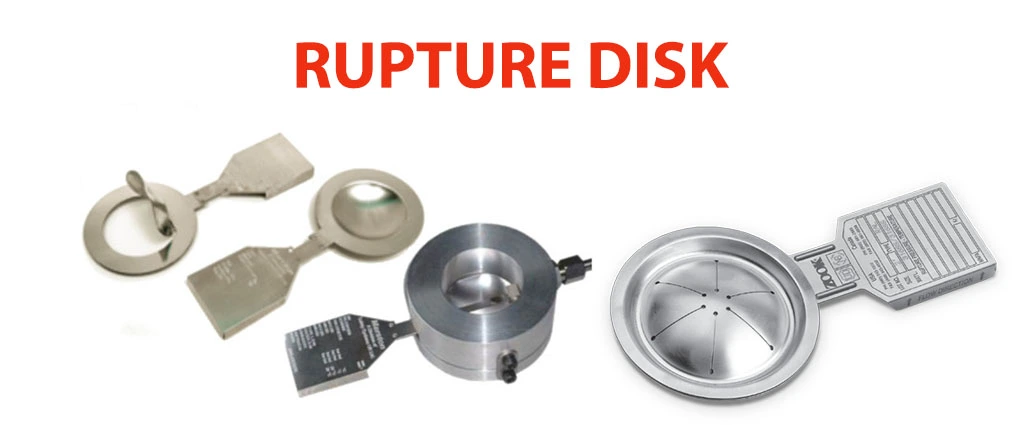A rupture disk also known as a pressure safety disc, burst disc, bursting disc, or burst diaphragm is a pressure relief device that is designed to burst at a predetermined pressure and temperature. It is typically made of a thin metal disk that is clamped in a holder. When the pressure in the system exceeds the burst pressure of the disk, the disk ruptures and releases the pressure.
Rupture disks are commonly used in series (upstream) with a Relief valve to prevent corrosive fluids from contacting the metal parts of the valve. In addition, this combination is a reclosing system.

Purposes of Rupture Disks
Rupture disks are used for a variety of purposes, including:
- Primary relief: Rupture disks can be used as the primary relief device in a system, providing protection against overpressure.
- Secondary relief: Rupture disks can also be used as a secondary relief device, providing backup protection in case the primary relief device fails.
- Series with relief valve: Rupture disks can be installed in series with a relief valve to protect the valve from corrosive fluids and to act as a seal.
- Quick opening valve: Rupture disks can also be used as quick opening valves due to their fast response time.
Types of Rupture Disks
There are two main types of rupture disks: forward-acting and reverse-acting.
- Forward-acting rupture disks: The pressure is applied to the concave side of the disk, causing it to bulge and eventually rupture.
- Reverse-acting rupture disks: The pressure is applied to the convex side of the disk, causing it to buckle and eventually rupture.
Applications of Rupture Disks
Rupture disks are used in a wide variety of applications, including:
- Petrochemical industry
- Aerospace industry
- Aviation industry
- Defense industry
- Medical industry
- Railroad industry
- Nuclear industry
- Chemical industry
- Pharmaceutical industry
- Food processing industry
- Oil field industry
Advantages of Rupture Disks
Rupture disks have a number of advantages over other types of pressure relief devices, including:
- Leak-tightness
- Instantaneous response time
- Minimum pressure drop
- Low cost
- Very high reliability
- Minimum maintenance
Disadvantages of Rupture Disks
Rupture disks also have a few disadvantages, including:
- They must be replaced after each rupture occurrence.
- They allow venting until system pressure equals downstream pressure.
Conclusion
Rupture disks are a versatile and reliable type of pressure relief device that can be used in a wide variety of applications.
Read Also
Download Free Piping PDF for Interview Preparation
Know more about Heat Exchanger
Download Free Piping PDF for Interview Preparation